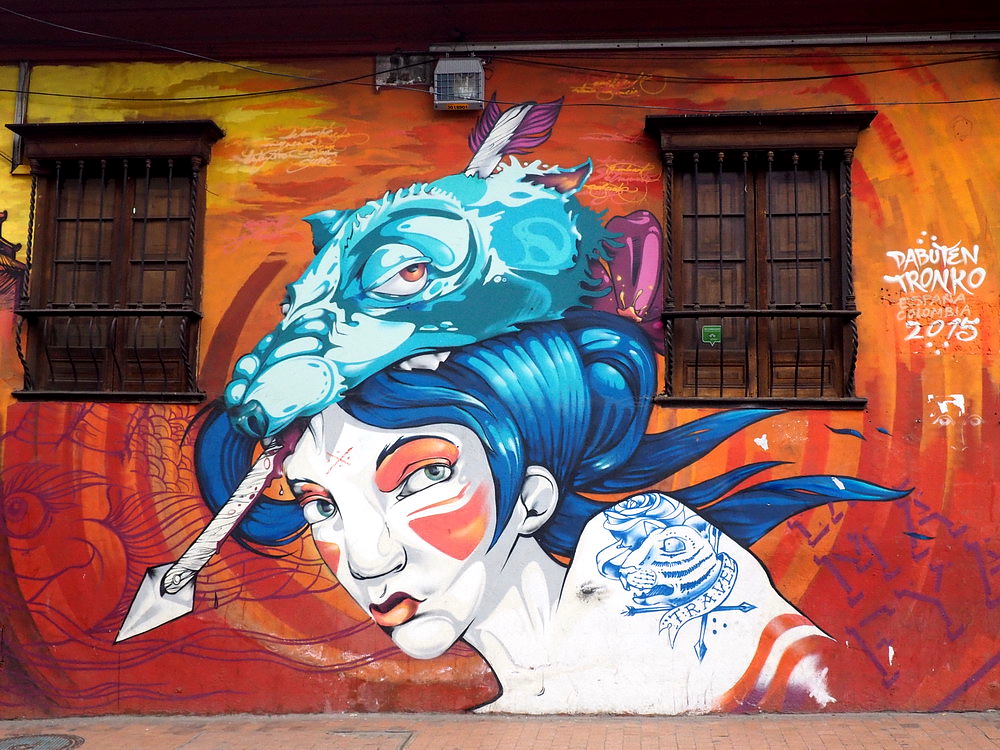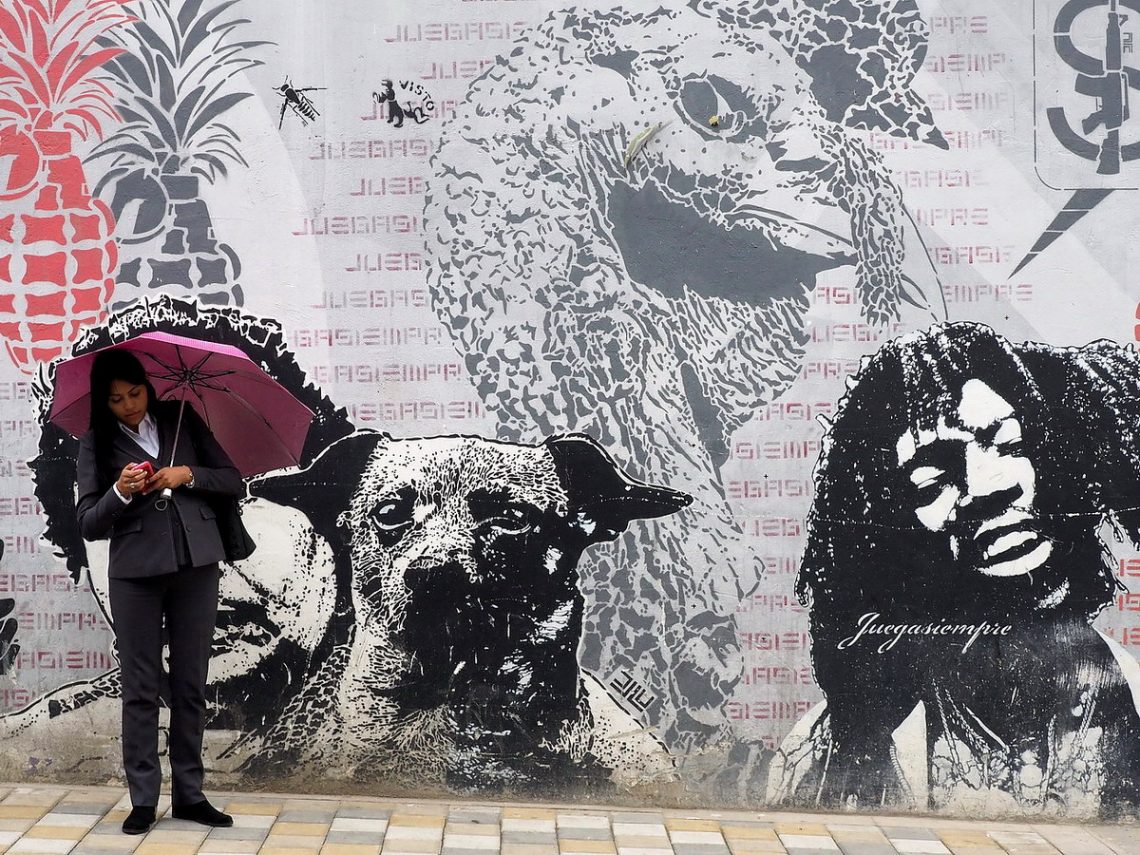In Bogota, Columbia’s capital, we lined up close to the wall so people could pass on the sidewalk in front of us.
Our guide, a young man with thick black hair, enthusiastically showed us the mural on the opposite side of the street depicting a bird in psychedelic colors. “See the white spot by its tail? The artist didn’t have one of his permits, so the authorities started to get rid of the painting. However, some graffiti painters, started such a strong protest that the mayor’s office backed off and gave him the missing permit retroactively so the mural could stay there.”
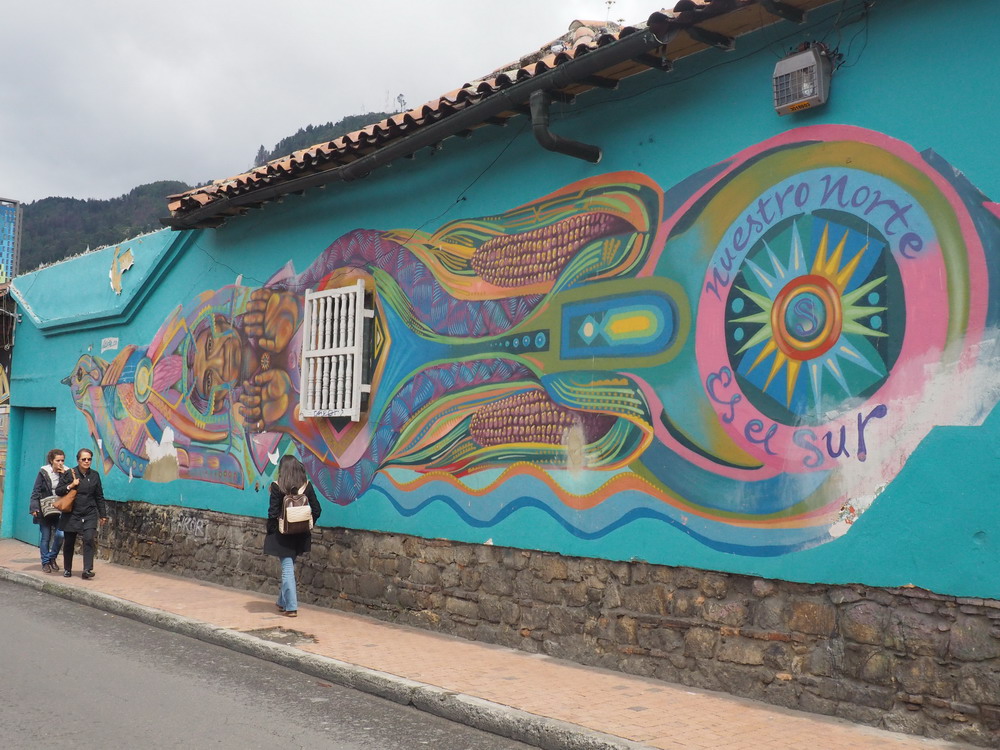
This story told us a lot about Bogota’s graffiti, but the situation wasn’t always so peaceful: a murder led to this form of street art becoming one of the city’s main attractions.
But let’s not jump so much ahead of the story! I fell in love with graffiti art in New York, where I realized during a tour, how complex they can be. Trends, groups, messages hide in seemingly simple wall paintings, their diversity telling us a lot about the city itself.
It’s no different in Bogota either, as the city has a permanent spot on the top 10 lists of most important graffiti centers of the world. When I was planning my trip to Columbia, I decided to seek a dedicated tour, which is how I found the Bogota Graffiti Tour’s advert of a free walk, where two-three dozen people are shown around in exchange for a tip. Our guide, Carlos is a graffiti man himself therefore he knows this world well, so we received a thorough and expert tour.
It’s from him that we learned that apart from local artists, many internationally renowned painters come by to leave their marks on the walls. Kiptoe, the graffiti artist, arrived from Los Angeles and painted seven huge murals in the two weeks he spent here. His last creation was that of a kissing couple, a memento to falling in love with a Columbian girl.
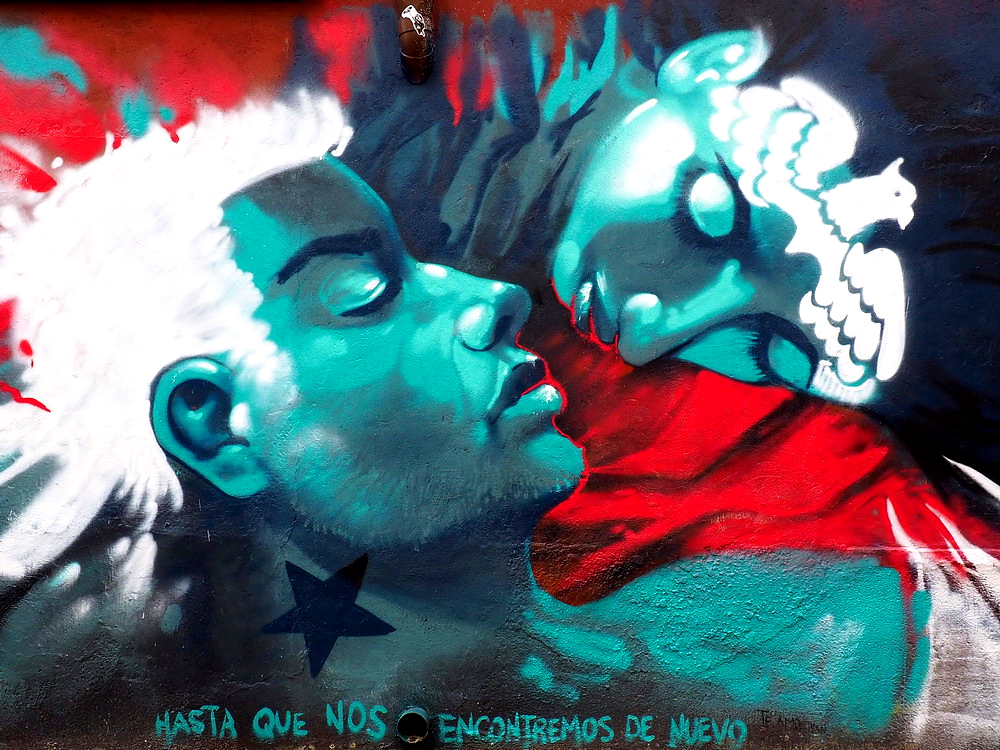
One of the city’s most joyful graffiti works was painted by El Pez from Barcelona. It depicts grinning fishes resembling cartoon characters, and has decorated an old iron gate for more than a decade now. Local artists respect it so much that there is not a tiny bit of overlapping paint, even if that is a favorite way to handle border-conflicts among gangs. The value of the gate, full of happy blue and green fishes, is estimated to be ten thousand dollars.
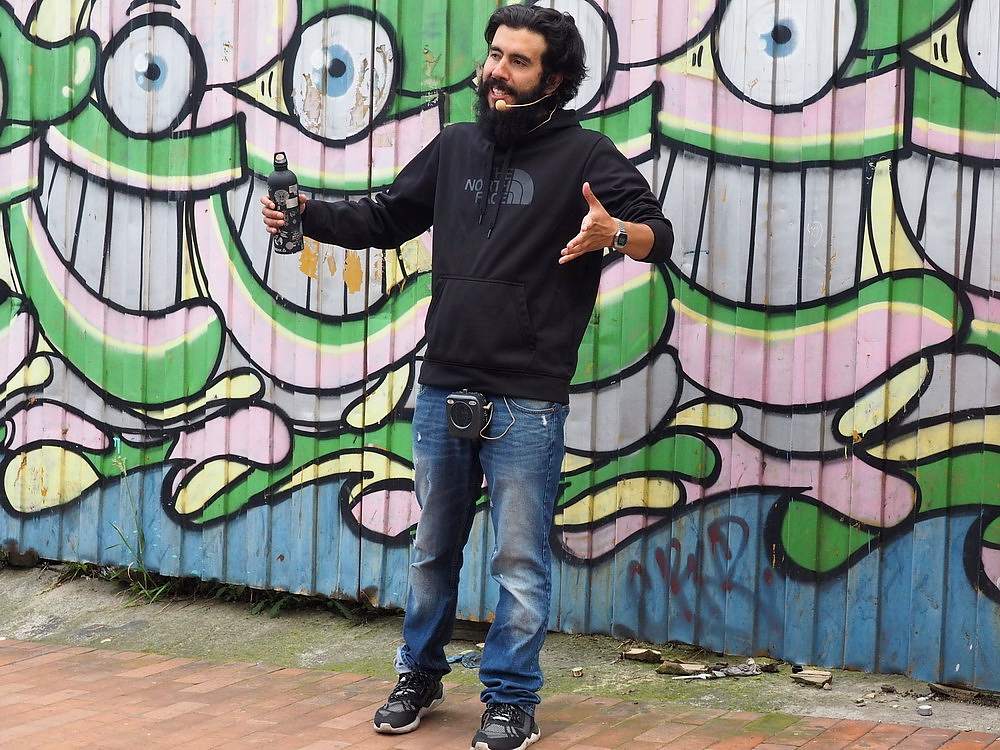
The paintings carry straightforward messages. Many artists stand up for peace, others protest against the oppression of the local indigenous people. After the expert explanation, we too looked at the walls and doorways with the investigative eyes of an art historian. In the modern part of the city center we find paintings with political messages, while shops in the old town give permission for more “art like” graffiti to draw in tourists and what is more, often pay more famous artists for a piece. It’s especially interesting that some quarters of the city on the verge of decadence- like Santa Fe and the so called Mural City- were put back on the map by graffiti.
Carlos also told us that the relationship between the city and its artists wasn’t always this cordial. Until 2011, graffiti painters had to work at night in total secrecy. If caught, not only were they fined, but sometimes beating and prison also awaited them.
All this changed in 2011. A 16 year old boy, Diego Felipe Becerra, was painting an underground passage when a few police officers noticed him and shot him in the back during the chase. The killer police officer tried to defend himself by saying he caught and searched the boy, and found a weapon on him, but the weapon never turned up. “The police officer could not be reached on radio for two hours after the event, during which time he managed to fabricate a nice story. All of a sudden, when a bus driver appeared who stated that the boy had robbed him earlier, there were ear and eye witnesses. The officer was let go” told Carlos in a bitter voice.
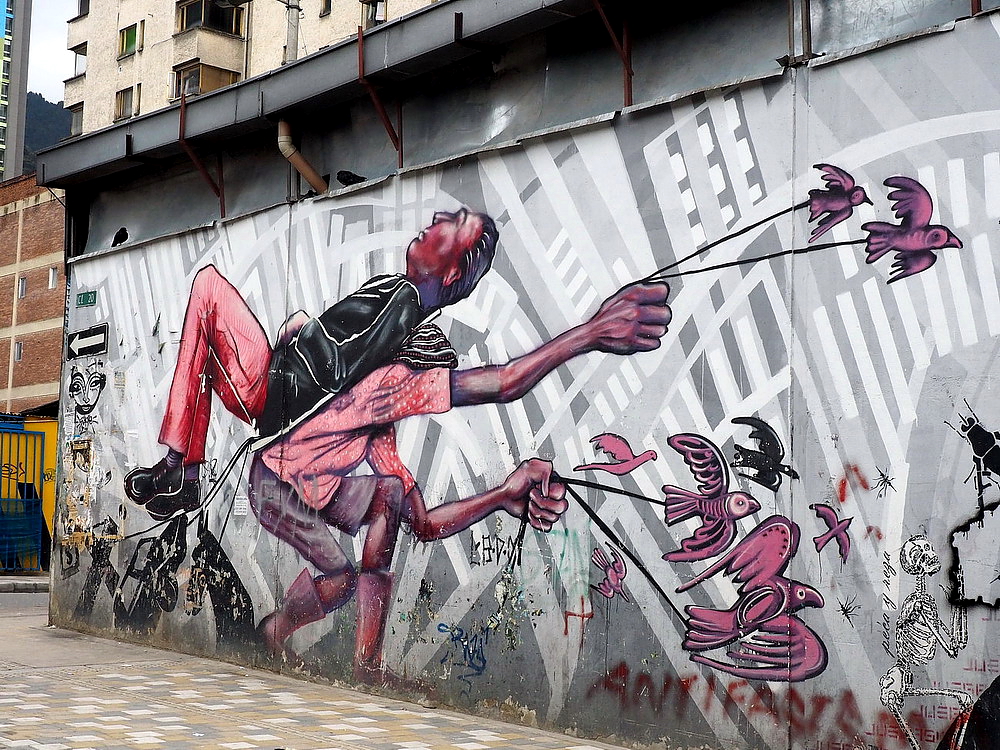
The case sparked an unexpectedly intense wave of protests and the authorities had to back off. A new case was made against the police officer and based on the facts, a prosecutor wanting to set a precedent, convicted the offender of murder and jailed him for 36 years. I was just about relieved that the bad guy got punished, when Carlos added a tad annoyed, that the murderer escaped from his house arrest and has never been found since. Since then, graffiti painters are tolerated. If they obtain all the necessary permits (from the owner of the building, or in case of a protected building, the city) then, apart from a few exceptions, they are free to paint. Only certain public buildings, memorials and some neighborhoods are off limits. But even those who paint on the above mentioned buildings do not risk going to jail, they only have to pay a small fine of maximum 60 dollars, and clean the wall.

After 2011, graffiti flourished and creative youth filled the city with more and more complex and art-like paintings.
Not even Justin Bieber, the Canadian singer, could resist the temptation and came back after a concert to paint a wall. The piquancy was that the wall he chose was on the road from the airport to town, where it was forbidden to paint – even in the new, liberal regime. But as Justin Bieber is a superstar, the town leadership made an exception: providing spray paint and a few dozen police officers, even closing off the road.
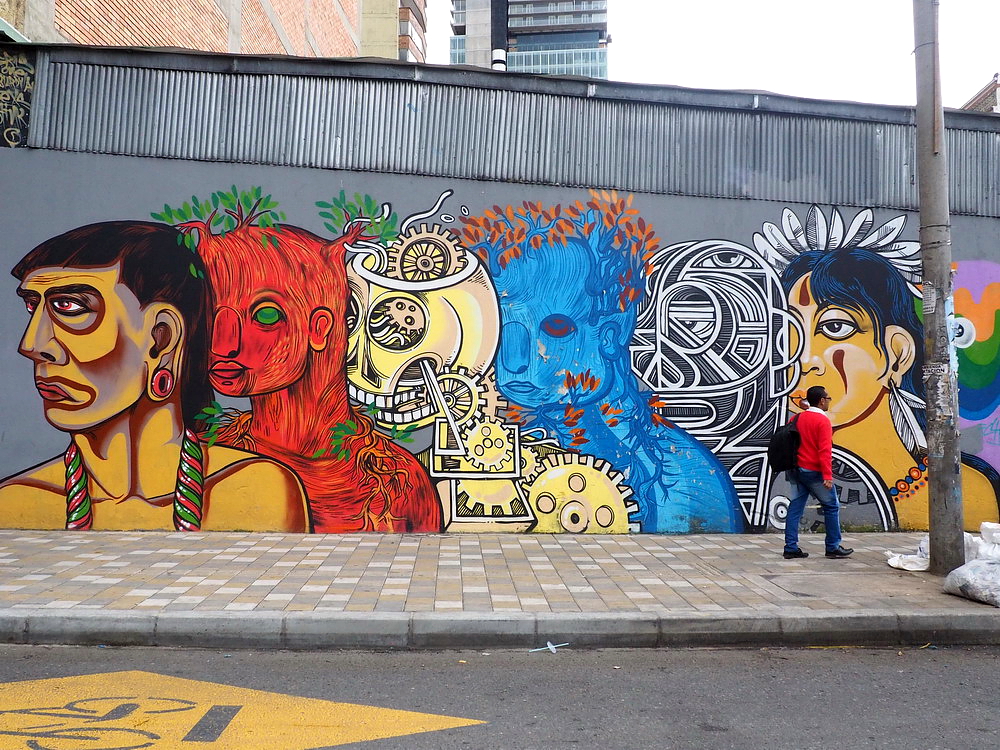
This blew the fuse with the local graffiti community: just a few hours later they destroyed Bieber’s whole piece and advertised a 24 hour, huge communal painting event for the next week on the same road. 300 artists pledged to show up, so rather than opposing, the town leadership provided hundreds of spray paint cases for them too. The proud artists didn’t accept this but nevertheless blocked the road to the airport and painted on all of the walls. When I left Bogota, I saw the seemingly endless drawings from the taxi myself and that was my last sight before saying goodbye to the city.
